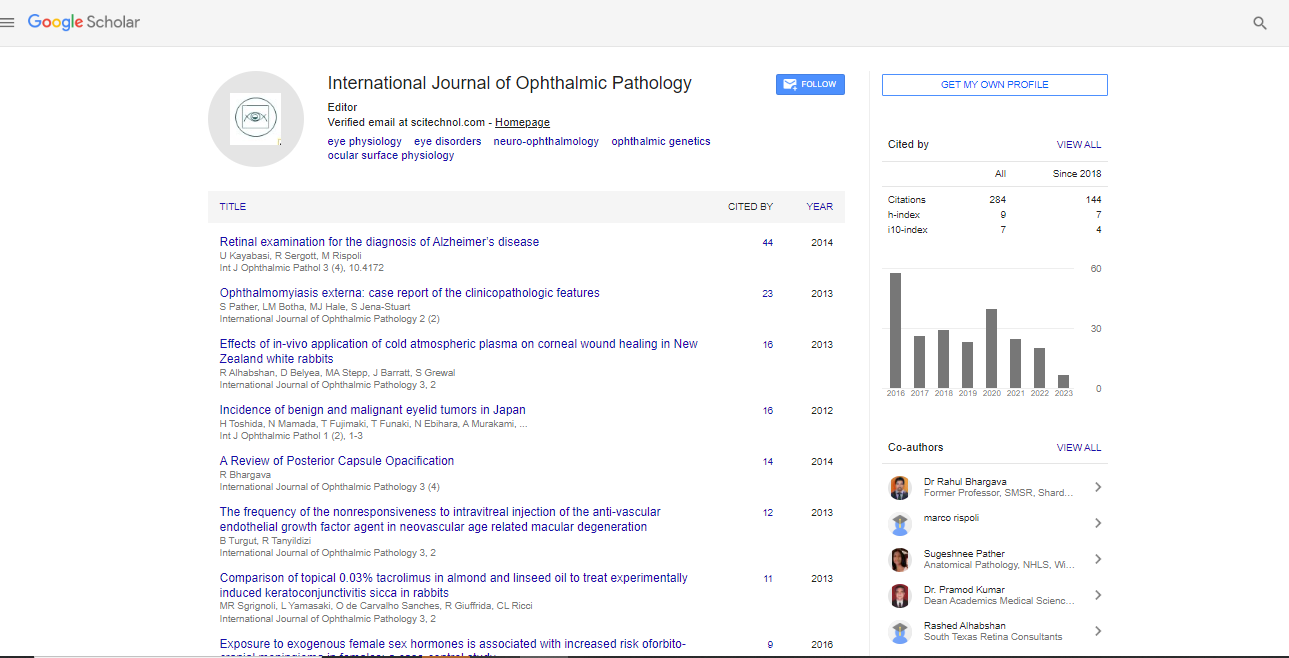Use of anchor domains to enable the use of biologics to treat ocular surface disease
Robert M. Q. Shanks*, Eric G. Romanowski, John E. Romanowski, Katherine Davoli, Nancy A. McNamara and Jes K. Klarlund
University of Pittsburgh, USA
University of California, USA
: Int J Ophthalmic Pathol
Abstract
Purpose: Corneal diseases are generally treated by topical drug application because it minimizes off-target exposure and allows more aggressive treatments. However, the ocular surface has very efficient clearance mechanisms including blinking and tear flow that washed out biologics drugs too quickly for them to have significant therapeutic effects. The goal of this study was to test the hypothesis that attaching a module that binds to the ocular surface and that can serve as an “anchor” to increase the residency time of biologics on the ocular surface. The outcome could extend the use of biologics for the treatment of ocular surface diseases. Methods: A variety of antibodies were conjugated to wheat germ agglutinin which binds GlcNAc and sialic acid that are ubiquitously present in the cornea using EDC (1-Ethyl-3-[3-dimethylaminopropyl] carbodiimide)/ sulfo-NHS(N-hydroxysulfosuccinimide) cross-linking. Binding of AlexaFlour 488-labeled ligands was assessed by binding to antibodies immobilized on GlcNAc beads. Antibody to IL-17A was labeled with AlexaFluor 488 and the retention was followed by fluorescent imaging. To establish dry eye disease phenotypes, the main extraorbital lacrimal glands of C57Black/6 were surgically removed. The effects of application on the integrity of the corneal surface were monitored by fluorescein staining and histological analysis for limbal CD4+ cells, epithelial thickness and disorganization and disruption of innervation. Scoring was done by masked observers. Results: Antibodies conjugation to wheat germ agglutinin did not compromise binding of antibodies to their cognate ligands, increased retention on the ocular surface by 350-fold and conjugated antibodies to IL-17A, IL-23 and IL-1β conjugated reduced manifestations of dry eye, even when applied just once daily. By contrast unconjugated antibodies and the anchor alone control were ineffective. Conclusions: Anchors, such as wheat germ agglutinin, appear to be a simple means to overcome washout and allow their therapeutic use of biologics on the ocular surface.
Biography
Robert M. Q. Shanks is an associate professor at the University of Pittsburgh, School of Medicine with expertise in molecular microbiology and ocular infections.
 Spanish
Spanish  Chinese
Chinese  Russian
Russian  German
German  French
French  Japanese
Japanese  Portuguese
Portuguese  Hindi
Hindi 